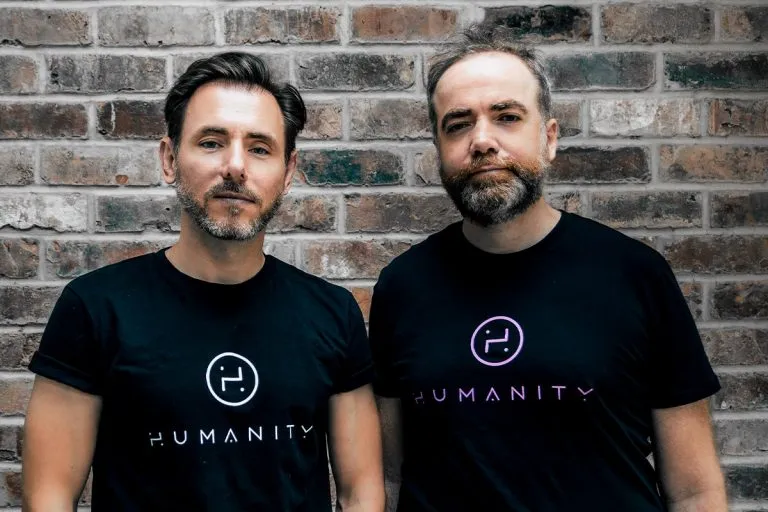Since the release of chat GPT in November 2022, the corporate race is on to identify and successfully integrate the most impactful generative AI-based business applications.
With a broad range of use cases, early results revealed by Google Cloud already demonstrate its impact, from increased operational efficiency (66%) and improved customer experience (57%) to accelerated innovation (49%) and increased employee productivity (48%).
Furthermore, the latest research from McKinsey estimates that generative AI could add the equivalent of $2.6 trillion to $4.4 trillion annually to the global economy.
In this blog post, we’ll review the use cases for generative AI, the enterprises already leveraging GenAI, how to approach ROI assessment for GenAI initiatives, and where to get started with them.
5 Types of Enterprise Generative AI Use Cases
The majority of GenAI adopters rely on off-the-shelf features integrated into productivity applications (71%), standard applications (68%), and enterprise platforms (61%). Let’s review the five common use cases for generative AI that transform today’s workflows. We’ll list them in the order of increasing complexity and value.
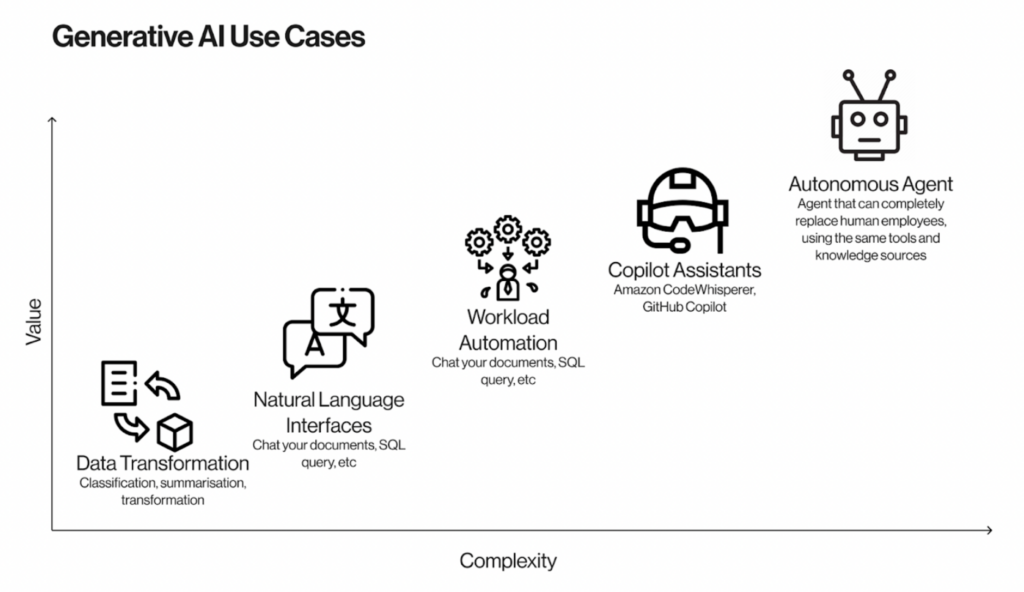
Data Transformations
Ask a tool like ChatGPT to summarize a 20,000-word report, and it’ll oblige. This is one example of how GenAI tools speed up working with large amounts of text data, increasing employee productivity.
Data transformations powered by generative AI span:
- Summarization: extracting key points from large volumes of structured and unstructured text data, such as email threads or reports. Examples: summarizing legal documents or hours-long meeting transcripts.
- Classification: categorizing content, be it text, image, or video, based on shared characteristics. Examples: classifying claims in insurance or support tickets for triaging; grouping podcasts into topics by analyzing transcripts.
- Feature extraction: identifying essential information in the text, as well as analyzing it for sentiment. Examples: sentiment analysis in customer support tickets or social media posts.
- Format conversion: transforming unstructured data into structured one. Examples: extracting data from free-text first notice of loss submitted via a chatbot in insurance.
- Information expansion: providing definitions or synonyms to specific terms based on the user’s request (e.g., “Explain internal combustion in Layman’s terms.”)
Natural Language Interfaces (NLI)
As a new stage in the evolution of computer-human interfaces, NLIs can replace graphic user interfaces to interact with databases or applications. Users can formulate their requests in natural language instead of clicking buttons or tapping the screen. Those requests are then processed by a large language model (LLM) to execute a specific action and return a natural language response.
Here are two examples of NLIs’ application in the corporate setting:
- Chat-your data. LLMs can be integrated with knowledge bases to allow users to ask questions naturally instead of typing search queries. An LLM can also enable users to query data from databases without any complex SQL use and generate structured analytics reports, democratizing business intelligence via data search.
- Tool-user chatbots. Chatbots powered by GenAI can answer nuanced questions and power a hyper-personalized experience. For example, a chatbot can help users find and book suitable flights using any number of parameters beyond the traditional departure, arrival, and date.
Workflow Automation
GenAI tools can automate business workflows based on factors like:
- Frequency
- Burden
- Variability
- Resource complexity
- Process complexity
To identify which workflows to automate, you need to collect and analyze big data on your internal operations. Once you pinpoint the areas of improvement with the biggest ROI, you can leverage GenAI to streamline those workflows.
Here are six examples of workflow automation powered by enterprise generative AI:
- Talent acquisition: screening received CVs using specific parameters and assessing the screened CVs using qualifications criteria to return the top 3, 5, or 10 candidates
- Software development: automating testing and simulating edge cases, summarizing code for developer onboarding, generating documentation
- Regulatory compliance: comparing existing policies against regulatory requirements and identifying non-compliant practices
- Translation at scale: automatically translating content at scale to optimize localization for multinational enterprises
- Insurance appeal letter generation: automatically generating appeal letters for insurance providers based on the patient records and applicable medical policies
- Market research: simulating market scenarios, streamlining competitor analysis, suggesting compliance strategies
Copilots
Copilots are NLIs enhanced with connections to multiple additional data sources and systems. They’re meant to assist employees across diverse tasks and activities.
Here are several examples of existing GenAI copilots:
- Microsoft Copilot: integrated with Microsoft 365 apps and Windows 11, this copilot can generate content and images, proofread and edit drafts, and more.
- Amazon CodeWhisperer: designed for use in IDEs, CodeWhisperer can generate code snippets, flag code resembling open-source projects, detect potential security vulnerabilities, and suggest fixes, enhancing developer productivity by 55%.
- GitHub Copilot: already adopted by 37,000+ organizations, it can generate code suggestions, assist in bug hunting and fixing, and improve code quality, speeding up development by 55%.
- Appian AI Copilot: it allows insurers to quickly generate a claims submission form by transforming uploaded PDF claim forms into web pages, automate claims triaging, and analyze claim images for damage.
Autonomous Agents
The most complex GenAI use case is also the one bearing the highest reward. An autonomous agent is capable of navigating a wide range of complex workflows with little to no human intervention, allowing for automating whole job functions. This creates the potential of replacing human employees with GenAI tools.
Implementing autonomous agents requires integration with diverse knowledge sources and tools. However, for now, autonomous agents are mainly experimental due to their many limitations. They reportedly struggle to remain focused on the stated objective. There are also concerns about autonomous agents’ reliability in complex settings and unpredictable scenarios.
3 Business Functions that Can Be Transformed by GenAI
According to McKinsey, about three-quarters of the value from GenAI use cases concerns four areas of operations:
- Customer operations
- Software engineering
- Marketing and sales
- Research and development
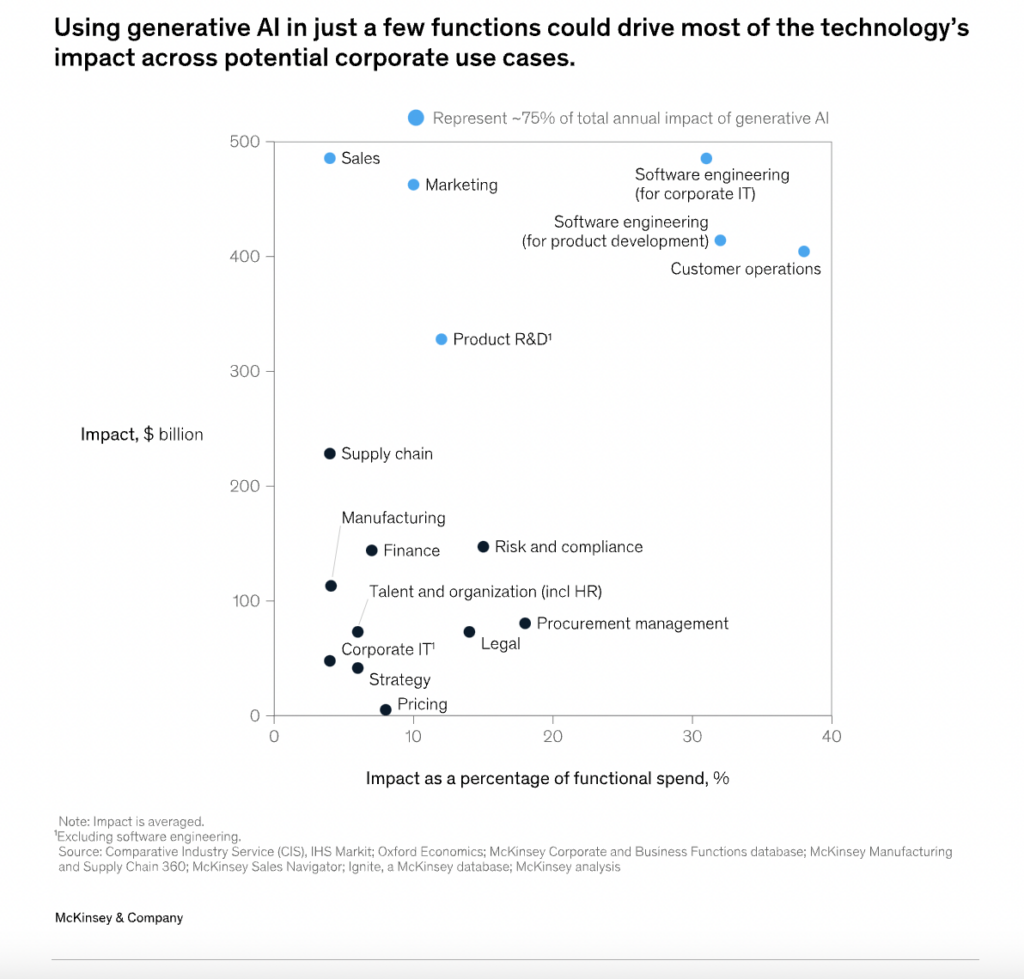
Let’s break down the three business functions where GenAI can bring tangible value today.
Customer Support: Conversational Interfaces & Agent Assistance
Solutions powered by LLMs can understand and generate natural language in ways previous technology spurts couldn’t, enabling:
- Conversational search. A self-service customer support tool enables customers to find answers to their queries in the knowledge base faster and more easily. GenAI can translate results into their native language if necessary. Chatbots and voice assistants can respond to more complex queries than previous generations. Thus, they reduce the strain on customer service specialists.
- Real-time agent assistance. GenAI tools like Google Cloud’s Agent Assist can increase agent productivity with various features. For example, they can automate live call transcription, provide real-time answers and suggestions to the agent, and create summaries.
Marketing: Personalized Recommendations
LLMs can identify user intents and contexts and take sentiment analysis to the next level. This data can power hyperpersonalized recommendations, search results, and location-based suggestions.
Generative AI can also enhance media discovery via conversational interactions, as exemplified by this sample architecture for personalized content discovery by Google.
Accounting & HR: Automating Repetitive Tasks
These two areas are notoriously heavy on routine administrative tasks. However, automating such tasks is what GenAI excels at. As a result of this automation, employees can dedicate their time to higher-value tasks and complex problem-solving that can’t be offloaded to GenAI.
Here are three accounting and HR tasks GenAI can automate:
- Extracting data from unstructured formats like email threads
- Automatically pre-filling forms by leveraging unstructured data
- Summarizing documents like long-form written feedback for performance reviews
Generative AI can also reshape recruiting by helping managers write better job descriptions and personalize candidate outreach efforts.
3 Enterprises Already Leveraging GenAI
Although 48% of business leaders expect GenAI to transform their organization within one to three years, that doesn’t mean that generative AI tools aren’t finding their application in today’s corporate world.
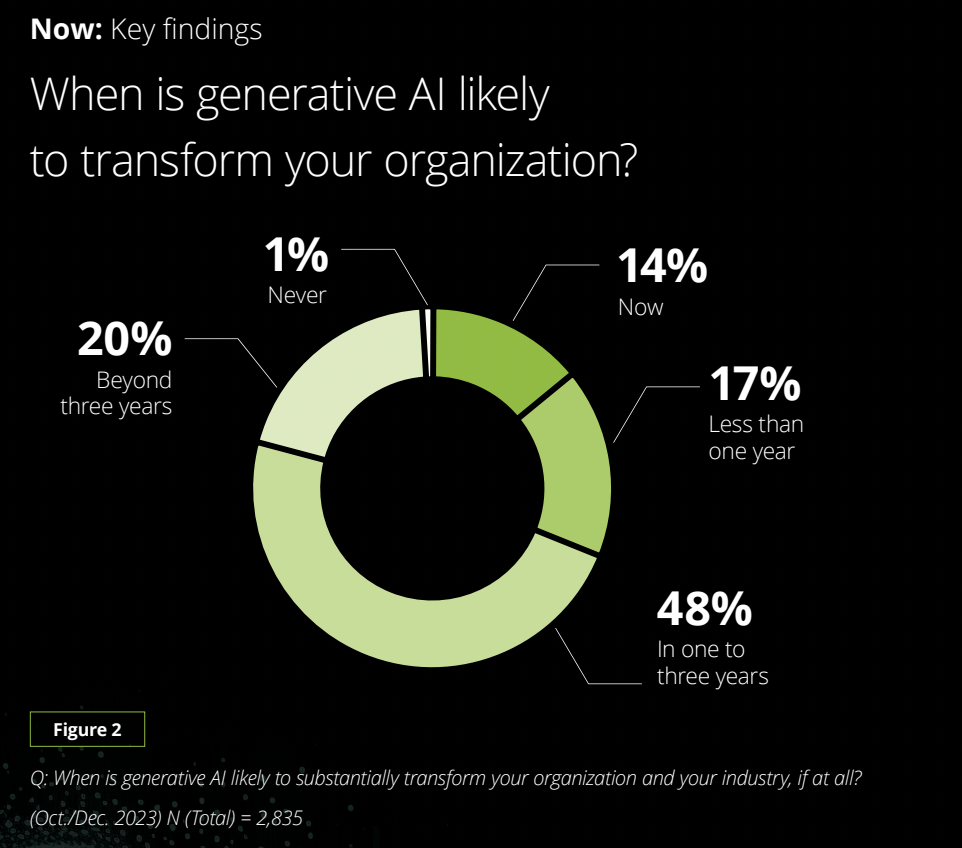
* Now decides next: Insights from the leading edge of generative AI adoption report, Deloitte
Here are just three examples:
- AXA. This insurance company deployed an internal GenAI service dubbed AXA Secure GPT for its 1,000 employees. AXA Secure GPT can generate, sum up, translate, and correct texts, images, and code, making employees more productive.
- Duolingo. The company behind the language learning app leverages GitHub Copilot to help its engineers become more productive. Thanks to GitHub Copilot, developer speed increased by 25%.
- Octopus Energy. This sustainable energy company introduced GenAI in its customer service platform to enable employees to draft in-depth, rich responses faster. As a result, the company saw an increase of 18% in customer happiness scores.
How to Measure the ROI for Generative AI Initiatives
Gartner proposes assessing the ROI across three types of GenAI investments:
- Quick wins. Using off-the-shelf productivity assistants (e.g., Microsoft 365 Copilot) comes with low upfront investments and helps streamline certain tasks. The ROI would then be measured in time saved on those tasks within a specific time period.
- Differentiating use cases. Leveraging GenAI to gain insight into enterprise data and transform current processes entails higher risks and costs. These initiatives’ ROI comes in the form of direct and indirect financial benefits, such as a higher revenue generation potential.
- Transformational initiatives. Using GenAI to create innovative business models and corner new markets means the highest risk – and the highest reward. However, the ROI is strategic and can be difficult to quantify in financial terms.
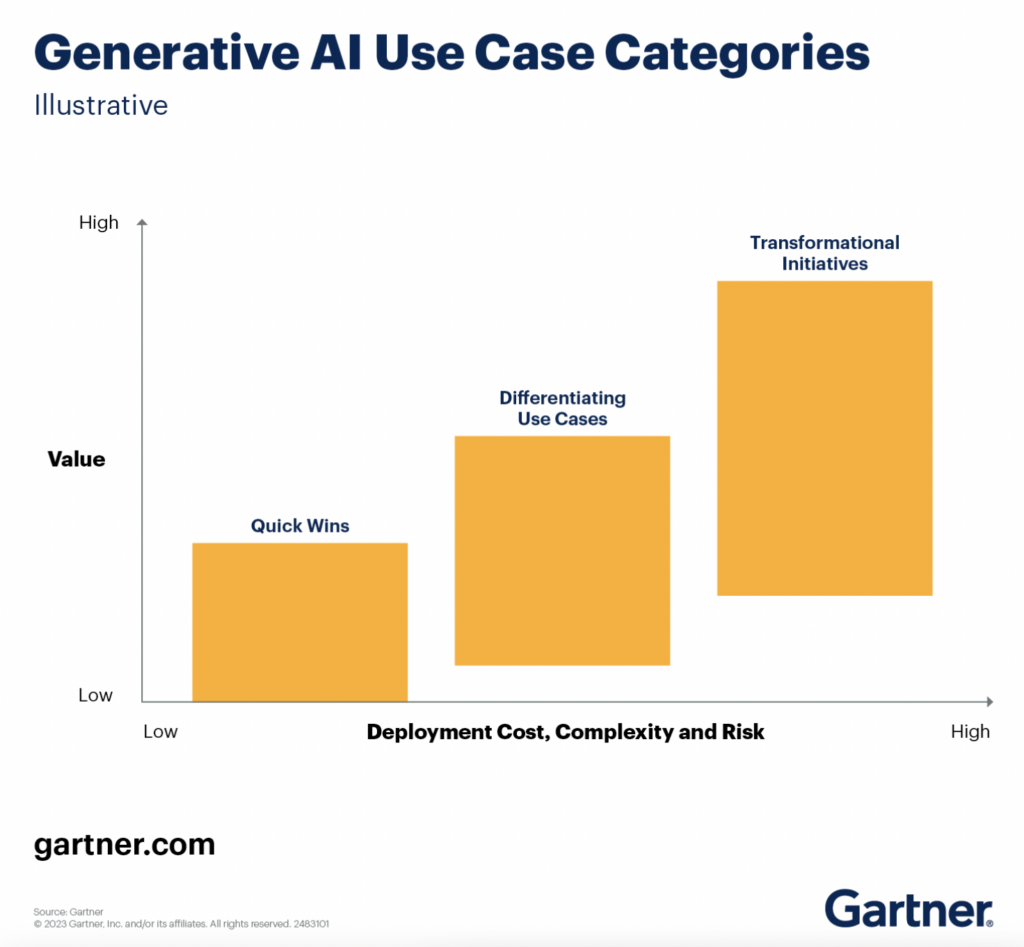
How Neurons Lab Approaches Generative AI
Discover Neurons Lab’s GenAI solutions and take a deep dive into how we helped Peak Defence enhance business operations with enterprise-generative AI:
Where to Start with Enterprise Generative AI
As the technology’s applications are diverse, it’s crucial to zero in on the specific domain where generative AI can bring the highest ROI. It can come in the form of automated or accelerated tasks, better idea generation, or democratized access to business intelligence.
Once you zero in on the domain, identify the job functions that can be made more productive and conduct buy vs build analysis. Deploy the GenAI tool as a pilot project, ensure your employees can work seamlessly with it, and measure the results.
If you have a few ideas but don’t know where to start with them, Neurons Lab can help you. Our AI design sprint will enable you to identify the business opportunities with the highest ROI and clarify how you can leverage AI for the maximum impact.
As an AI consultancy with 50+ GenAI projects on our track record, we have the expertise required to rapidly conceptualize, design, and prototype your idea during the sprint. Get in touch with us to discuss how we can help you boost operational efficiency and gain a competitive edge with GenAI.
Frequently Asked Questions
What is enterprise generative AI?
Generative AI is a type of artificial intelligence used to manipulate and generate content (text, code, audio, images, videos). Enterprise generative AI is applying this technology to achieve business goals like increasing employee productivity and creating new revenue streams.
What are the use cases for generative AI in business?
Five common use cases for generative AI are, in order of increasing complexity:
- Data transformations: summary generation, content classification
- Natural language interfaces (NLIs): chat-your-data and tool-user chatbots
- Workflow automation: appeal letter generation, automated translation at scale
- Copilots: NLIs equipped with data to streamline a variety of tasks in a given job function
- Autonomous agents: GenAI models capable of replacing human employees
Which business functions can GenAI transform?
Generative AI can be applied in:
- Accounting and HR to automate tasks like extracting data from unstructured sources and summarizing lengthy documents
- Marketing to create personalized communication at scale, as well as personalized content discovery flows
- Customer service to enable better self-service options and increase agent productivity with automated transcript creation and response suggestions
Sources
- Jackie Wiles, Take This View to Assess ROI for Generative AI, Gartner, August 15, 2023
- Now decides next: Insights from the leading edge of generative AI adoption, Deloitte, January 2024
- Bryan Hancock, Bill Schaninger, and Lareina Yee, Generative AI and the future of HR, McKinsey, June 5, 2023
- The economic potential of generative AI: The next productivity frontier, McKinsey, June 14, 2023
- GPT Was Just the Beginning. Here Come Autonomous Agents, BCG, November 28, 2023
- The Generative AI Dossier, Deloitte AI Institute, 2023
- Technology’s generational moment with generative AI: A CIO and CTO guide, McKinsey, July 11, 2023
- What’s your prompt? Introducing “The executive’s guide to generative AI,” Google Cloud, September 12, 2023
- Gartner Experts Answer the Top Generative AI Questions for Your Enterprise, Gartner





